
*Concept and story
"Vinh Quy Bái Tổ" is a Vietnamese long-standing cultural tradition. After having achieved high results in exams, scholars return to their homeland to visit their relatives and ancestors. This ceremony embodies the spirit of gratitude for their origins and their ancestors.
“Vinh Quy Bái Tổ” stamp collection was inspired by the same-named Đông Hồ painting - Vietnamese folk painting originating in Đông Hồ village in Bắc Ninh Province.
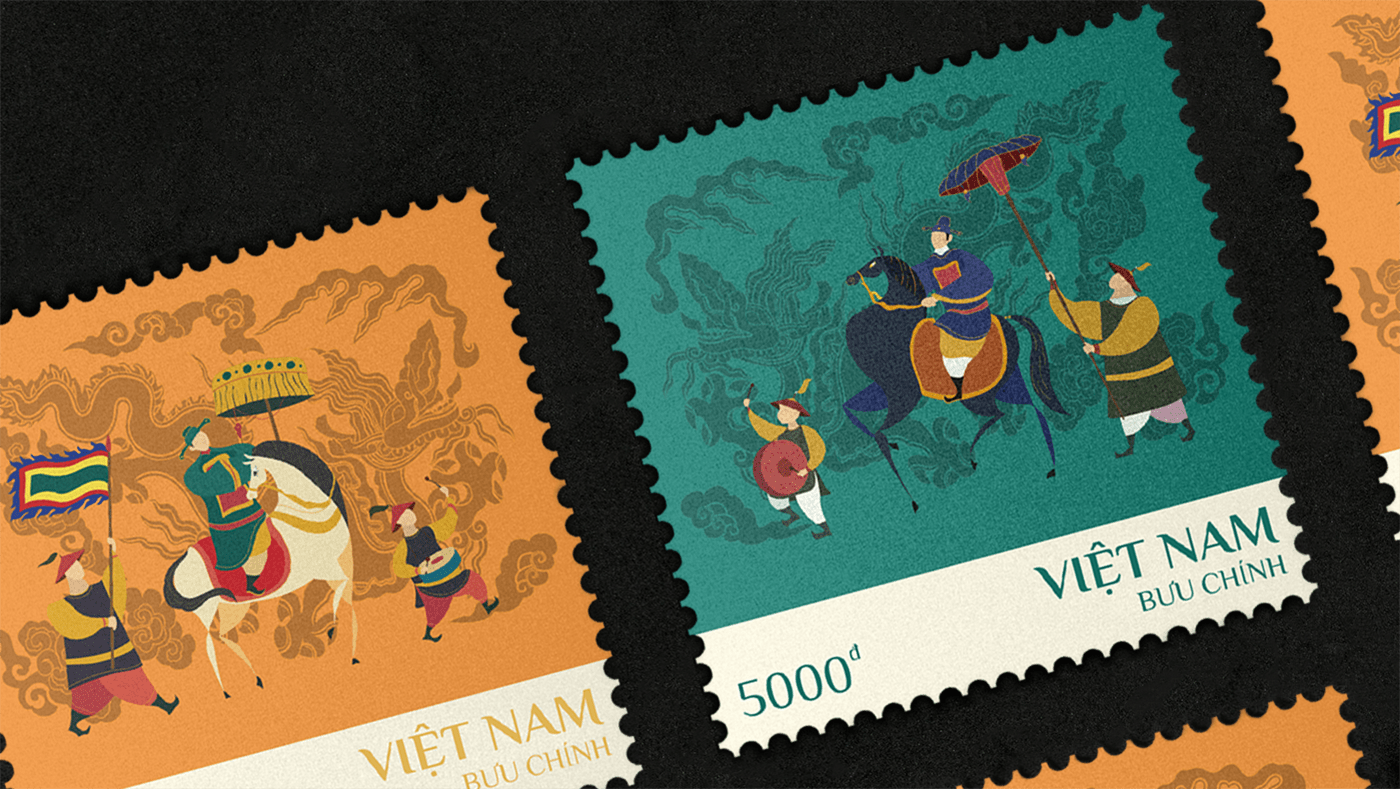
*Visualization
The Confucian court examination system in Vietnam was a system for entering the court and mandarin civil service positions based on knowledge of the classics and literary style.
“Tam Khôi” was three first-class titles for the Doctor of Philosophy degree. Those titles were approved via the court exam named “Đình”, and “Trạng nguyên” was the first of three prizes. The two other titles were "Bảng nhãn" for second place and "Thám hoa" for third place. The Trần dynasty was a milestone for setting the “Tam Khôi” institutions.
Therefore, every detail of the costume was researched based on historical documents about the Tran Dynasty.
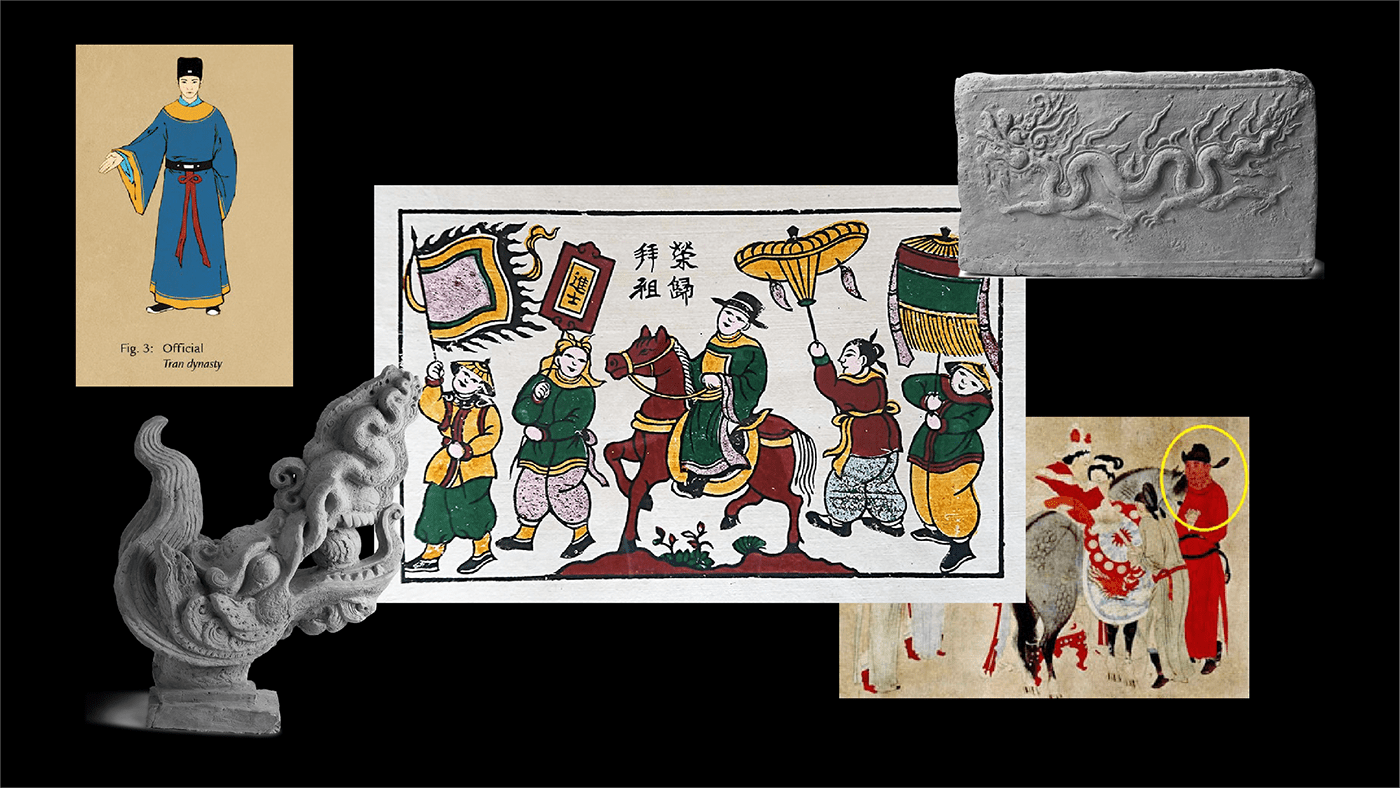
*Illustratol
The stamp collection's background included Tran Dynasty dragon patterns with the hidden meaning of this historical milestone.
Furthermore, while the outfits, accoutrements, and mounts were all illustrated in great detail, the faces were not. Thus, the collection’s purpose is to honor all the talented and righteous people of the country, not just towards a specific individual.
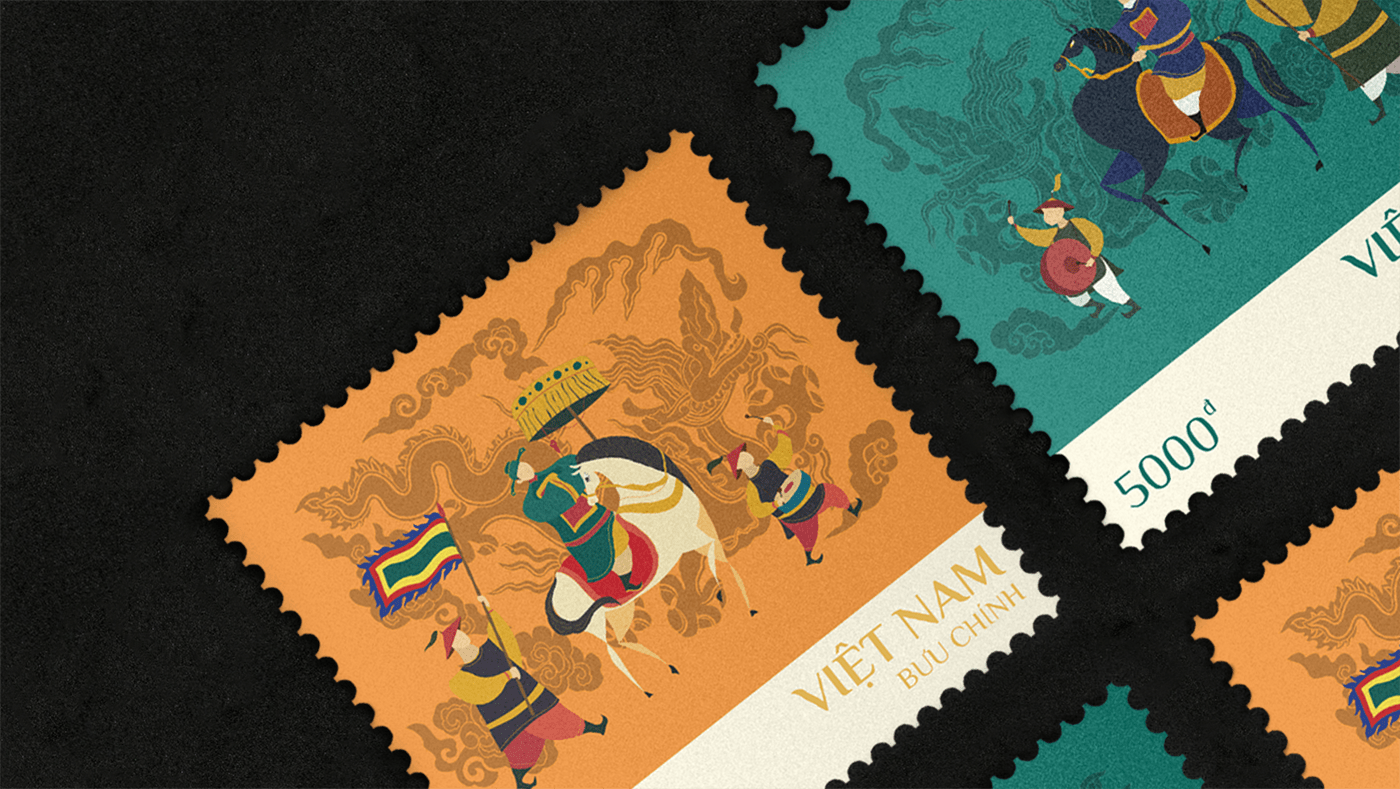
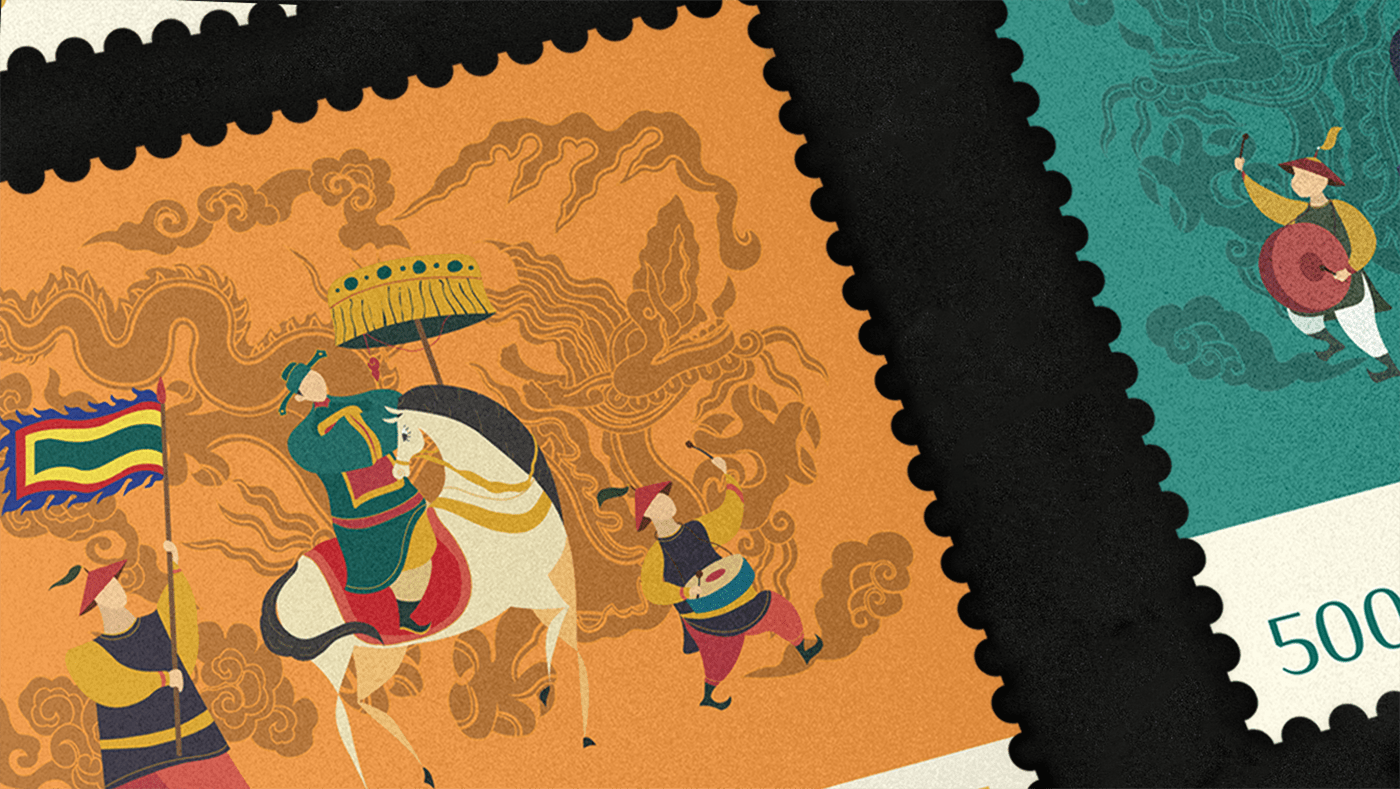
Typeface
Another highlight of the collection is the typeface. Philosopher sans-serif font with unique details in each letter is a great confluence between history and innovation in expressing style for Vietnamese classical culture.
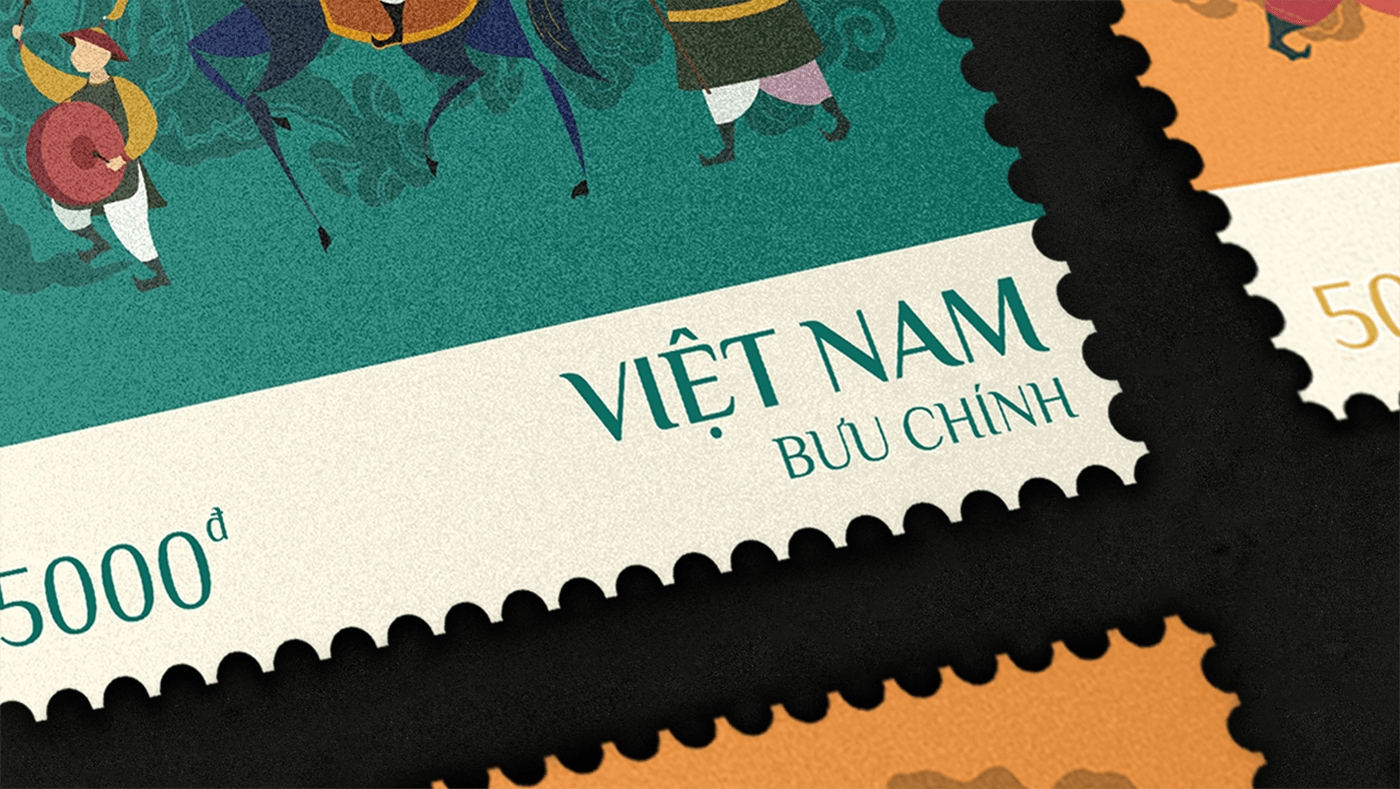
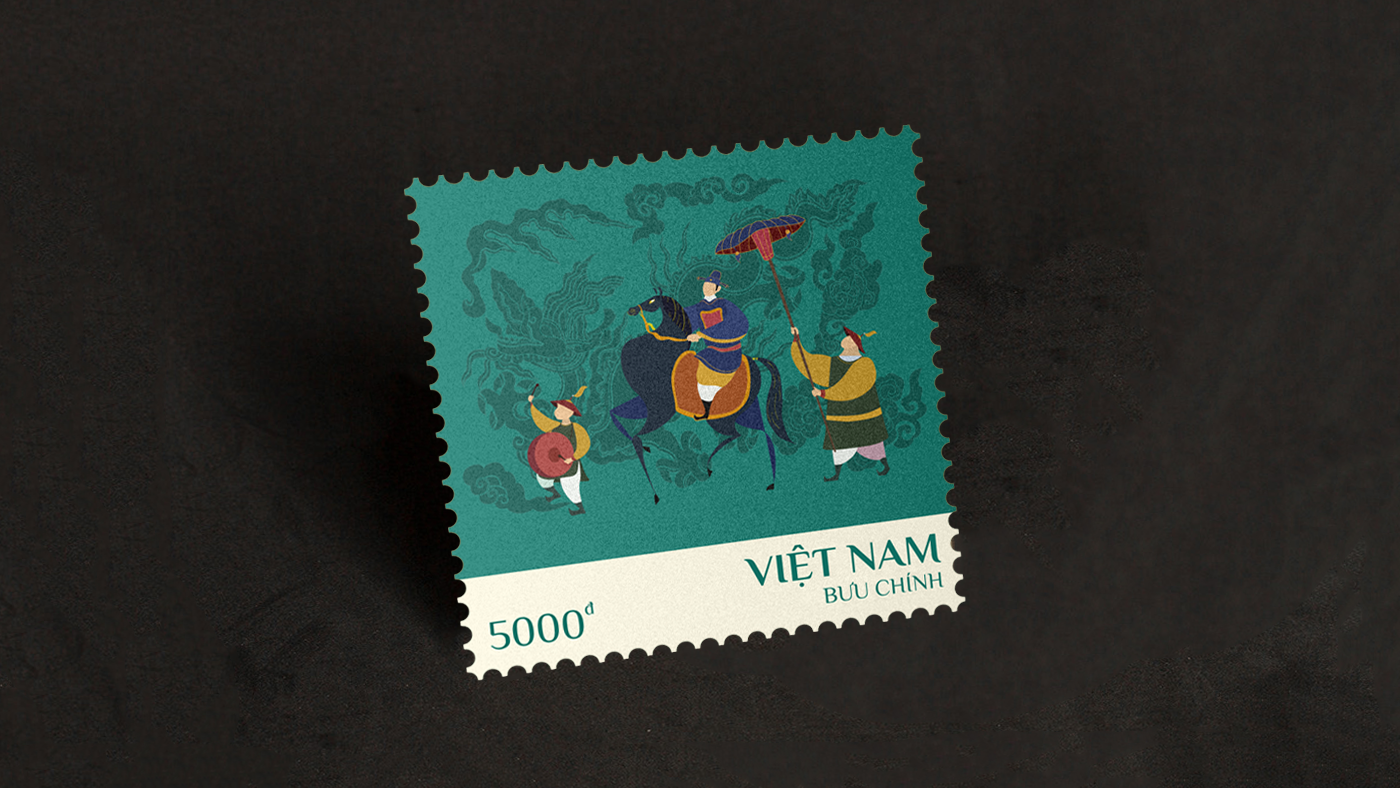
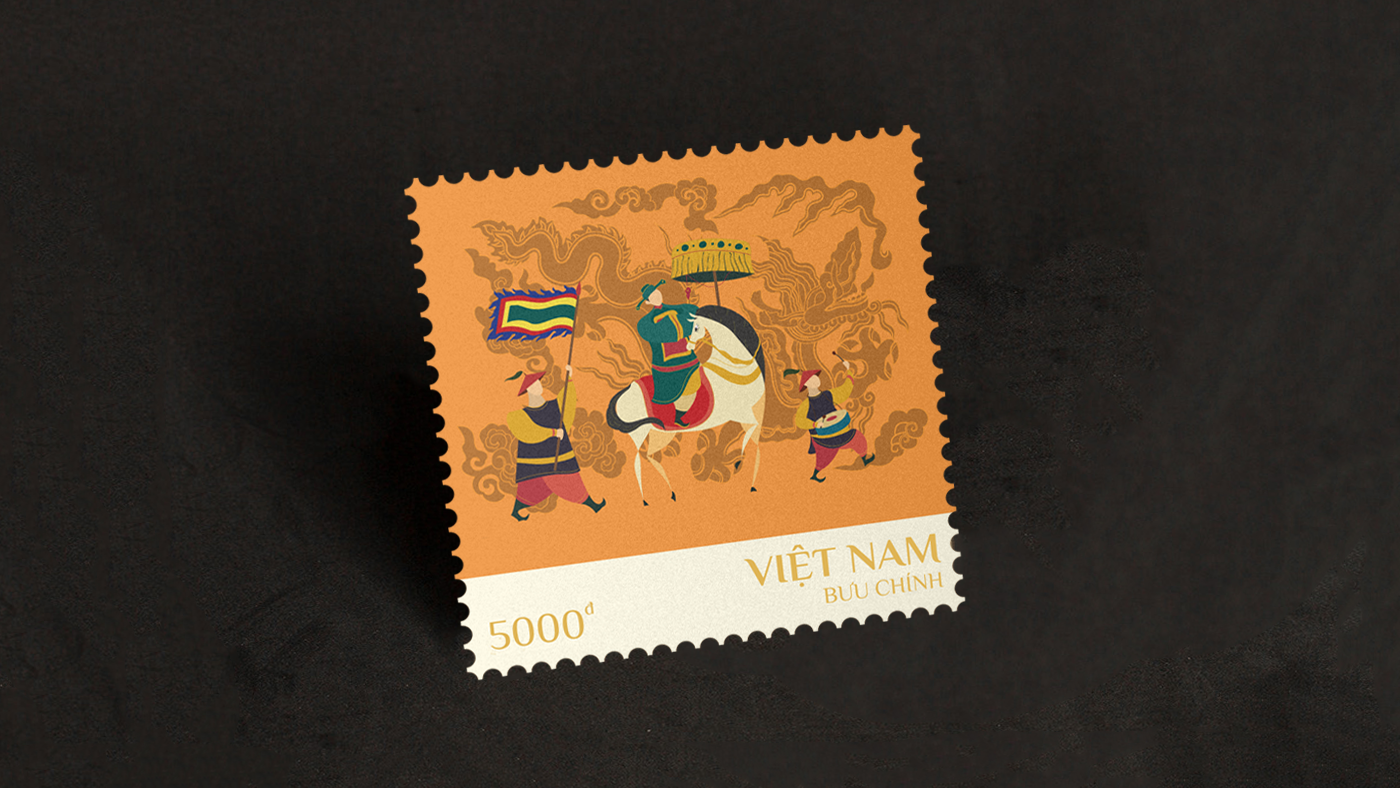
MORE ABOUT PROJECT






